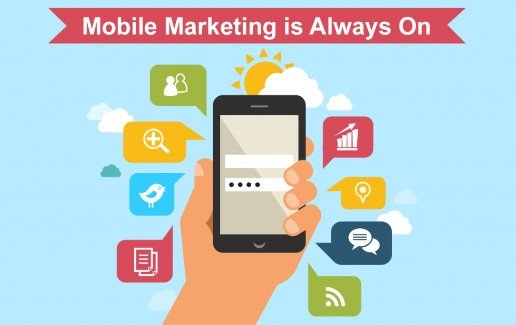Welcome to the exciting world of mobile marketing! With smartphones becoming an essential part of our daily lives, mobile marketing offers unparalleled opportunities. Whether you’re a small business owner or a seasoned marketer, mastering mobile marketing is key to reaching and engaging today’s hyper-connected audience. In this guide, we’ll explore proven strategies to help you conquer customer pockets and drive conversions.
Understanding Mobile Marketing
Mobile marketing involves reaching your target audience through their mobile devices. This includes smartphones, tablets, and wearable technology. It encompasses a wide range of tactics, including apps, SMS, social media, and mobile-optimized websites.
Why Mobile Marketing Matters
Mobile marketing is crucial for several reasons:
- Widespread Mobile Use: Most people use mobile devices daily.
- Instant Connectivity: Mobile devices keep users connected 24/7.
- Personalization: Mobile marketing allows for highly personalized experiences.
- High Engagement: Mobile users are more likely to engage with content.
- Cost-Effective: Many mobile marketing strategies are affordable.
Key Components of Mobile Marketing

To master mobile marketing, you need to understand its key components:
- Mobile Apps
- SMS Marketing
- Mobile-Friendly Websites
- Social Media
- Mobile Advertising
- Location-Based Marketing
Mobile Apps
Mobile apps are a powerful tool for engaging users. They provide a platform for personalized experiences and direct communication.
- User Experience: Design user-friendly interfaces that keep users engaged.
- Push Notifications: Send timely updates and promotions to users.
- Loyalty Programs: Reward users for their engagement and loyalty.
- In-App Purchases: Offer exclusive content or products within the app.
SMS Marketing
SMS marketing is one of the most direct and effective ways to reach your audience. With high open rates, SMS messages are likely to be read almost immediately.
- Opt-In Campaigns: Ensure users opt-in to receive messages.
- Personalized Messages: Tailor messages to individual preferences.
- Short and Sweet: Keep messages concise and to the point.
- Clear Calls to Action: Encourage users to take immediate action.
Mobile-Friendly Websites
A mobile-friendly website is essential for providing a seamless user experience. With many users accessing websites on mobile devices, optimization is key.
- Responsive Design: Ensure your website adapts to different screen sizes.
- Fast Loading Speed: Optimize images and content for quick loading.
- Easy Navigation: Simplify menus and buttons for easy use.
- Mobile Payments: Offer secure and convenient payment options.
Social Media
Social media platforms are a natural fit for mobile marketing. They offer extensive reach and high engagement rates.
- Platform Selection: Choose platforms that your target audience frequents.
- Visual Content: Use images and videos to capture attention.
- Live Streaming: Engage users with live events and updates.
- User-Generated Content: Encourage users to create and share content.
Mobile Advertising
Mobile advertising includes ads displayed on mobile devices through apps, social media, and websites.
- Ad Formats: Use banners, interstitials, and native ads.
- Targeting: Leverage demographic and behavioral data for precise targeting.
- Retargeting: Show ads to users who have previously interacted with your brand.
- Interactive Ads: Create engaging and interactive ad experiences.
Location-Based Marketing
Location-based marketing uses GPS data to target users based on their location.
- Geofencing: Set up virtual boundaries to trigger messages when users enter or leave specific areas.
- Proximity Marketing: Use Bluetooth and beacons to send messages to nearby users.
- Localized Content: Tailor content to local events and interests.
- In-Store Promotions: Offer special deals to users near your physical store.
Crafting an Effective Mobile Marketing Strategy
An effective mobile marketing strategy requires careful planning and execution. Follow these steps to create a winning strategy:
1. Define Your Goals
Start by defining what you want to achieve with your mobile marketing campaigns. Common goals include:
- Increasing App Downloads: Encourage users to download and use your app.
- Boosting Engagement: Increase user interaction with your content.
- Driving Sales: Encourage purchases through mobile channels.
- Building Loyalty: Strengthen customer relationships and loyalty.
2. Understand Your Audience
Knowing your audience is crucial for effective mobile marketing. Consider the following:
- Demographics: Age, gender, location, income, etc.
- Interests: Hobbies, preferences, favorite brands, etc.
- Behavior: Mobile usage patterns, purchase history, etc.

3. Choose the Right Channels
Select the mobile marketing channels that align with your goals and audience. For example:
- Apps: Ideal for delivering personalized experiences.
- SMS: Perfect for urgent and direct communication.
- Social Media: Great for engagement and brand building.
- Mobile Ads: Effective for reaching a broad audience.
4. Create Compelling Content
Your content should be engaging, relevant, and tailored to mobile users. Keep these tips in mind:
- Clarity: Be clear about your message and value proposition.
- Visual Appeal: Use high-quality images and videos.
- Short Form: Keep content brief and easy to digest.
- Interactivity: Encourage user interaction with your content.
5. Optimize for Mobile
Ensure all your marketing efforts are optimized for mobile devices:
- Design: Use responsive design for websites and emails.
- Speed: Optimize loading times for all mobile content.
- Accessibility: Make content accessible to all users, including those with disabilities.
6. Monitor and Optimize
Regularly track the performance of your mobile marketing campaigns and make adjustments as needed. Focus on:
- Engagement Rates: Measure user interaction with your content.
- Conversion Rates: Track the percentage of users who complete desired actions.
- Retention Rates: Monitor how many users return and stay engaged.
- ROI: Calculate the return on investment for your campaigns.
Advanced Mobile Marketing Techniques
Once you’ve mastered the basics, consider these advanced techniques to further boost your mobile marketing efforts:
Mobile App Analytics
Use analytics tools to gain insights into user behavior within your app. This data can help you improve the user experience and increase engagement.
- User Flow: Understand how users navigate your app.
- Retention Metrics: Track how often users return to your app.
- In-App Purchases: Monitor sales and revenue generated within the app.
- Crash Reports: Identify and fix issues that cause app crashes.
Mobile Wallet Marketing
Mobile wallets, like Apple Pay and Google Wallet, offer new opportunities for marketing and customer engagement.
- Digital Coupons: Send coupons directly to users’ mobile wallets.
- Loyalty Cards: Create digital loyalty cards for easy access.
- Event Tickets: Distribute event tickets via mobile wallets.
- Personalized Offers: Tailor offers based on user data and preferences.
Augmented Reality (AR)
AR technology can create immersive and interactive experiences for mobile users.
- Virtual Try-Ons: Allow users to virtually try on products, like clothes or makeup.
- Interactive Ads: Create ads that users can interact with in their environment.
- Location-Based AR: Offer AR experiences tied to specific locations.
- Product Demos: Use AR to demonstrate how products work.
Chatbots
Chatbots provide instant customer service and can enhance user engagement.
- Customer Support: Offer 24/7 support through chatbots.
- Personalized Recommendations: Use chatbots to suggest products based on user preferences.
- Order Tracking: Allow users to track their orders through chatbots.
- Interactive Content: Engage users with quizzes and interactive content via chatbots.
Measuring Success in Mobile Marketing
To ensure your mobile marketing efforts are effective, track and measure key performance indicators (KPIs). Important metrics include:
- App Downloads: Number of times your app is downloaded.
- Active Users: Number of users actively using your app or engaging with your content.
- Engagement Rate: Percentage of users interacting with your content.
- Conversion Rate: Percentage of users completing desired actions, like purchases.
- Retention Rate: Percentage of users returning to your app or content.
- Cost Per Acquisition (CPA): Cost of acquiring a new customer through mobile channels.
- Customer Lifetime Value (CLV): Total value a customer brings over their lifetime.

Use tools like Google Analytics, app analytics platforms, and social media insights to track these metrics and make data-driven decisions.
Conclusion
Mastering mobile marketing is essential for reaching today’s connected audience. By understanding the key components, crafting a solid strategy, and utilizing advanced techniques, you can conquer customer pockets and drive engagement and conversions. Stay enthusiastic, keep experimenting, and continuously optimize your campaigns. With dedication and creativity, you can unlock the full potential
